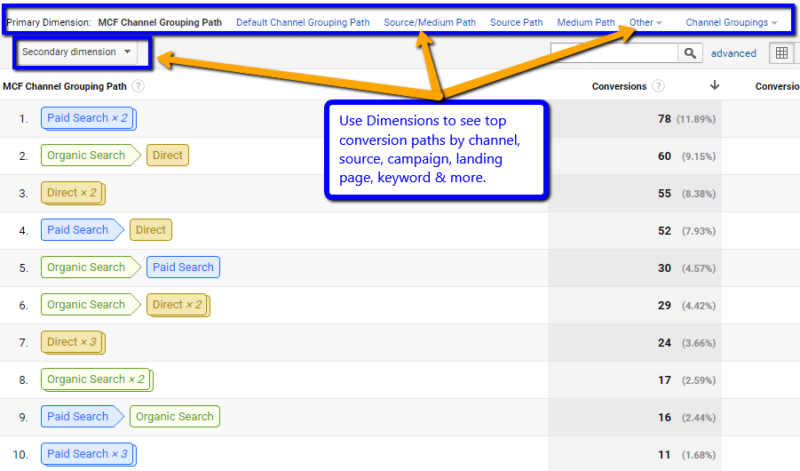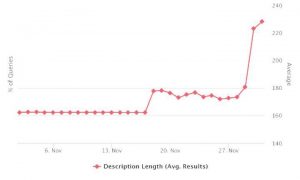Columnist Jessica Cameron provides B2B marketing tips for starting your new year off on the right foot.

It’s no small feat to be a successful B2B digital marketer in today’s complex, ever-changing environment. In this article, I offer several proven recommendations related to the domination of search engine results pages (SERPs), testing, attribution and ROI.
Utilize these tips to jump-start your search results in the new year and start 2017 with a bang.
New year, new opportunities
2016 was a year of incredible change. Google changed the SERP game by shifting visibility to paid advertising, while also changing the core organic algorithm to natively include Panda and RankBrain.
Search engine marketing isn’t getting any easier. Top it off with the rapid expansion of marketing technologies, system integrations, and now account-based marketing, and we’ve got an uphill battle.
As you look for opportunities to improve your 2017 results, these five tips offer big wins:
- Ensure SERP domination.
- Maximize conversions via testing.
- Capitalize on attribution insights.
- Integrate with the sales funnel.
- Understand total ROI with call tracking.
1. Ensure SERP domination.
Owning the SERP for high-priority search queries (keywords) builds brand recognition, credibility and trust with your target audience. Aligning paid and organic search provides insights into customer behavior you wouldn’t have in a siloed approach. Develop a cross-channel strategy that educates, builds trust and moves prospects through the funnel faster.
Test different messaging in your paid ads for target keywords, and start to understand the visitor intent behind the query. When writing your organic listings, make sure you follow the new rules for how your listings will display in the Google SERP to ensure your message doesn’t get cut off.
Look to your paid search queries for insight into what terms are driving real business results, including phone calls, content engagement and conversions. Identify search terms that are bringing top-of-funnel visitors to your website, and write organic content that aligns with the intent behind the query. To maximize results from organic search, you simply must incorporate the data and insights from a well-managed paid search campaign.
In the screen shot below, QuickBooks is demonstrating SERP domination and integrated messaging across their organic listing, paid ad and product listing ad.

2. Maximize conversions via testing.
Each visitor to your site offers the opportunity to educate, connect and convert. Too often we see marketers jump to a high-commitment offer, or miss the mark completely with no call to action. While conversion rate optimization and usability testing can be complicated, it doesn’t have to be. As the saying goes, start where you are. Dive into your analytics as a first step to understanding how visitors are responding to your content.
Focus on improving content with:
- high bounce/exit rates. Look at the overall flow of the page. Do design elements draw the eye to your call to action? How might you simplify the page to improve the user’s experience?
- low conversion rates. Determine what exactly you want visitors to do on the page. Is your call to action clear? Are the benefits obvious to the visitor, or does the content primarily focus on you and your company?
Be a detective around your visitor’s behavior and learn to ask smart questions. What on the page is preventing visitors from taking action? Hypothesize how elements on your page could change visitor behavior, and start testing. Before you know it, small wins will lead to big gains in engagement and conversion results.
3. Capitalize on attribution insights.
While, as a B2B marketer, your focus is likely on driving bottom-of-the funnel ”qualified” leads that are worthy of sales team follow-up, it’s also important for you to know what channels and content are driving prospects higher in the funnel. With a complex sales cycle, it can take six to eight touch points to generate a viable sales-ready lead.
Multi-Channel Funnel reports in Google Analytics are a great place to start to understand user behavior across various touch points in the funnel.
Start your quest for marketing insights by asking these four simple questions:
- What channels have the greatest impact on conversions?
- What sources are driving new customers at the top of the funnel?
- What content is driving visitors through the funnel to conversion?
- Are certain keywords more impactful at the top of the funnel vs. the bottom?
Find answers to these questions in the Top Conversion Path report. Understand which channels, keywords and content are driving top-of-funnel visits. I recommend that you utilize remarketing and search retargeting to reengage these top-of-funnel visitors and turn them into converters, aligning content with intent at each step of the funnel.
Here is an example of a Conversion Report by Channel:

4. Integrate with the sales funnel.
The best way to really understand the quality of leads coming from marketing efforts is to have visibility and access to lead outcomes tracked within your CRM system.
Google is helping B2B digital marketers tie lead opportunities to online activity through the new AdWords and Salesforce integration. You now have the ability to import lead data from Salesforce into AdWords and optimize campaigns based on your specific lead goals.
You can also use your prospect and customer lists for remarketing via the new Customer Match Lists. In either instance, use your CRM data to maximize each touchpoint with your prospects via your search marketing campaigns.
5. Understand total ROI with call tracking.
When it comes to B2B digital marketing, phone calls can drive a big piece of the lead pie. I often find that leads coming from phone calls are more qualified and closer to making a commitment than leads obtained from an online form. When you’re looking to increase qualified leads, a good place to start is understanding what’s driving qualified phone calls.
Call tracking can give you insight into what paid keywords and campaigns are driving the most phone calls. When considering the ROI of a campaign, close the loop and understand the complete influence of paid search by measuring both online leads and phone calls from your campaigns.
When applied to organic site visitors, call tracking also helps measure return from SEO efforts by tracking phone calls from targeted SEO landing pages. Use this data to build your content marketing strategy and asset distribution to maximize not only leads generated from forms on your website, but also qualified prospects who are willing to pick up the phone and call.
Jump-start your 2017 results
As we roll into a new year, I don’t suspect we’ll see the rate of transformation slow down any time soon. I urge digital marketers to embrace all of this change and utilize it to your competitive advantage.
Use these tips to uncover new opportunities to attract, connect and engage your audience across your marketing and sales process to drive real results from your 2017 digital marketing program.
[Article on Search Engine Land.]
Some opinions expressed in this article may be those of a guest author and not necessarily Marketing Land. Staff authors are listed here.
Marketing Land – Internet Marketing News, Strategies & Tips
(88)
Report Post







